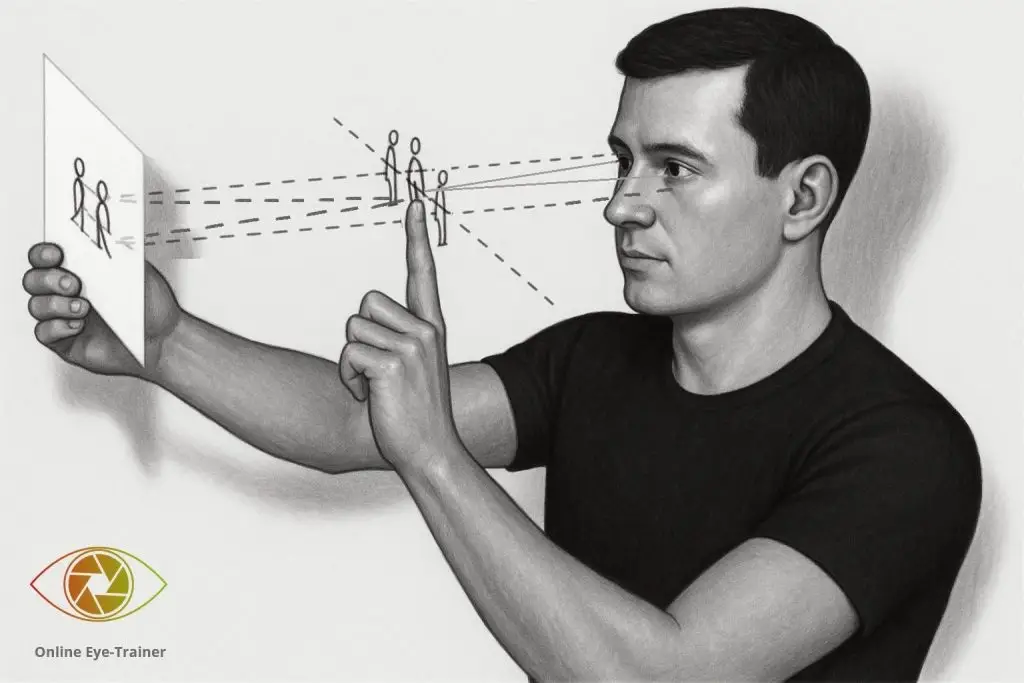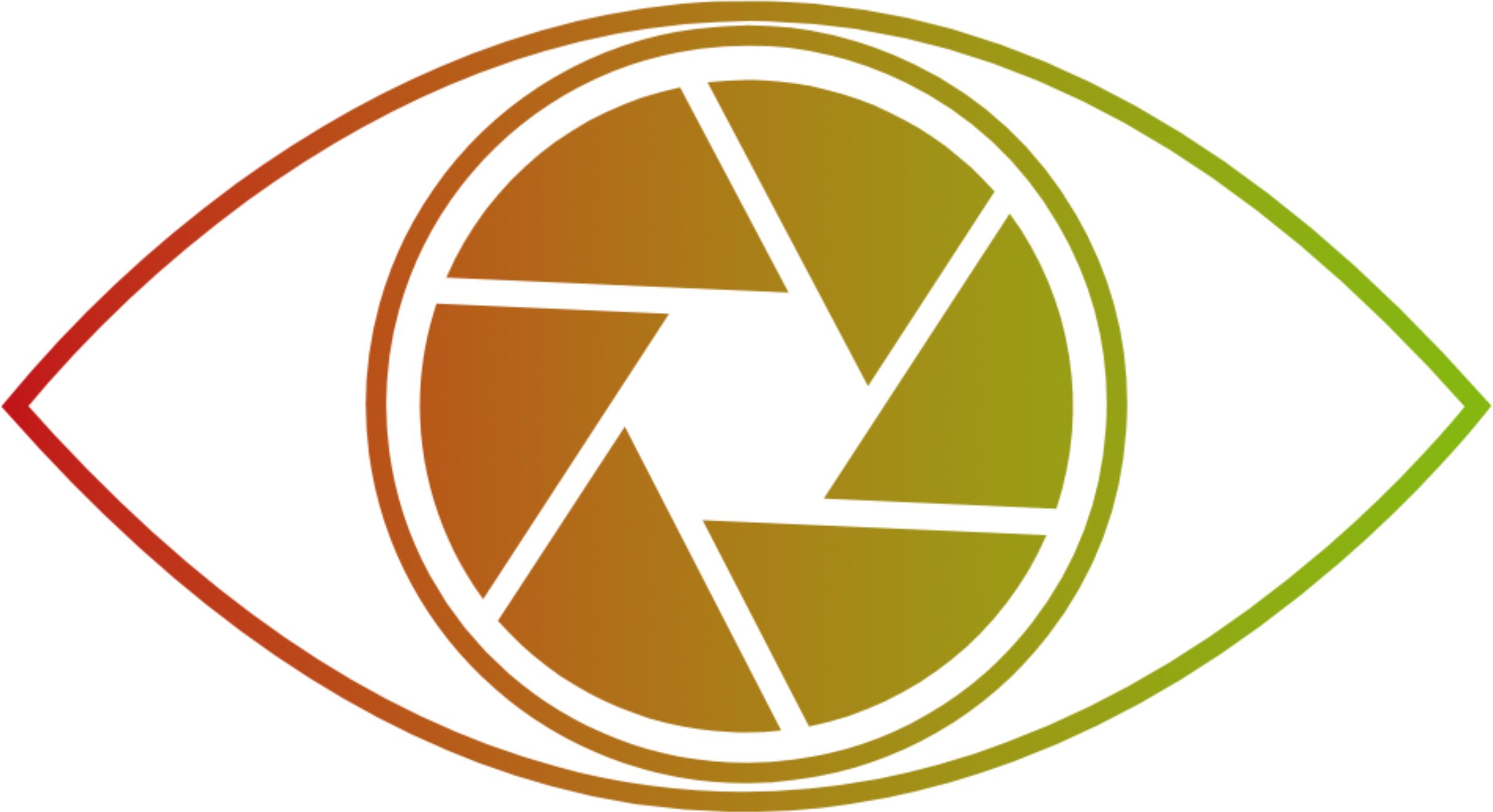It is well known that prolonged, intense near work—like using screens or reading—places significant strain on your eyes and brain. This stress can cause spasms in both the accommodative (focusing) muscle and the external eye muscles, which are responsible for eye movement. Without regular fusion training for the eyes, this imbalance can result in several visual problems, including:
- Reduced visual acuity
- Blurred vision
- Difficulty shifting focus between near and far (delayed refocusing)
- Frequent headaches
While “closer-further” vision exercises help relax the ciliary muscle (accommodation), fusion training specifically targets the external eye muscles. This strengthens coordination, improves binocular vision, and reduces eye fatigue. And the best part? You can easily do fusion training at home!

Binocular Vision vs. Fusion: What’s the Difference?
Binocular vision is the ability to use both eyes simultaneously to perceive depth and see the world in three dimensions. It means your eyes are working together.
Fusion, in contrast, is what your brain does with those two separate images. It merges them into a single, unified image.
Without effective fusion, you might still have binocular vision, but your brain receives conflicting images—causing double vision, eye strain, and discomfort.
In short:
- Binocular Vision = Two eyes working in tandem
- Fusion = The brain combining two images into one
Why Eye Muscles Matter in Fusion Training
Successful visual fusion depends largely on your external eye muscles, particularly:
- Medial Rectus Muscles – Help your eyes converge (focus on near objects)
- Lateral Rectus Muscles – Help your eyes diverge (focus on distant objects)
These muscles must work in perfect harmony to align both eyes on the same object. The superior/inferior rectus and oblique muscles play supporting roles in fine-tuning alignment.
That’s where fusion exercises come in—it retrains these muscles to function together more smoothly.
Who Needs Fusion Training? (Probably You)
Fusion training is not just for people with diagnosed vision problems. It benefits a wide range of people, including:
- Office workers and gamers with Computer Vision Syndrome (CVS)
- Students who experience frequent eye strain
- Children developing binocular coordination
- People with Myopia (nearsightedness) or Hyperopia (farsightedness)
- Individuals with Astigmatism
- Anyone who wants to reduce screen-related eye fatigue or improve 3D perception
Chiastopic Fusion Training
Chiastopic fusion is a type of convergence fusion exercise where you intentionally cross your eyes (go slightly “cross-eyed”) to fuse two laterally spaced images into one. This forces your eyes to converge (move inward), which strengthens the external eye muscles and improves binocular vision.
„Three Squares“ Fusion Training Card: Step-by-Step
The „Three Squares“ exercise is an example of Chiastopic Fusion Training and especially useful in combination with “closer-further”exercises, such as those offered by the Online Eye-Trainer. Both types of fusion training can easily be done at home.

• The Fusion Training Card „Three Squares” contains two squares, each labeled with the text “io”, which are deliberately offset.
• Fusion only occurs when the two squares merge into one- third centered square, aligning the text.
📝 How to Perform:
1. Look at the card with two squares (picture before) about 40 cm from your eyes.
2. Fixate on a finger placed between your eyes and the card.
3. You will see four blurred images of the squares (physiological diplopia).
4. Slowly bring the finger closer until the middle two images overlap and merge, forming a single square (picture after).
5. Focus on the merged (middle) square and try to see it clearly by maintaining eye convergence and relaxing accommodation.
6. Once you can fuse the image with the finger, try without it by going slightly cross-eyed.
7. Perform this exercise for about 10 minutes, twice a day.

Combine Fusion Training with Other Eye Exercises
For best results, pair fusion exercises with other techniques such as:
- “Closer-Further” Exercises – Improve accommodation by training the ciliary muscle for example with Online Eye-Trainer.
- Peripheral Awareness Drills – Enhance spatial awareness
- Palming and Eye Relaxation – Reduce stress and eye fatigue
This holistic approach boosts both eye movement and focus strength.
Fusion Training Tips: Get It Right
To make progress at home effective:
✅ Relax your eyes—don’t force it
✅ Keep lighting even and glare-free
✅ Use warm-up eye exercises
✅ Be patient and consistent
Avoid:
❌ Rushing through exercises
❌ Straining to see results
❌ Practicing in poor lighting conditions
Famous Experts Behind Fusion Training Techniques
- Charles Sheard (1883–1963) – Researched binocular vision problems and pioneered fusion training protocols.
- William Horatio Bates (1860–1931) – Developed natural vision methods focused on muscle relaxation.
- Janet Goodrich – Expanded Bates’ work to include binocular and fusion exercises.
- Arnold Gesell (1880–1961) – Focused on visual development in children, including fusion skill growth.
- Alfred Yarbus (1914–1986) – Studied eye movements and coordination, critical for successful fusion.
Start Fusion Training at Home Today!
FAQs About Fusion Training at Home
1. Can children safely do fusion exercises?
Yes! Early fusion exercises are great for kids and can help prevent issues like lazy eye and poor depth perception.
2. How long until I see results from fusion training?
Some people see improvements in a few days; for others, it might take a few weeks. Consistency is more important than speed.
3. Do I need a professional trainer or app?
Not necessarily. Many exercises can be done using simple tools like a fusion card and pencil. Digital tools can help but aren’t essential.
4. Does fusion training help with double vision?
Yes. By teaching your eyes to coordinate and fuse images, it can reduce or eliminate double vision in many cases.
5. Is it okay to do fusion training every day?
Absolutely. Just don’t overdo it—stick to around 10–15 minutes per session, twice a day for best results.
This can be also interesting:
Natural Methods of Eye Training
Why eye exercises are better than glasses
What is the Online Eye-Trainer©?
Best Eye Exercises for Digital Eye Strain (Step-by-Step Guide)
How to Adjust Your Screen Settings for Eye Comfort (Ultimate Guide)Offline Methods of Eye Training
Training of the Ciliary Eye Muscle
